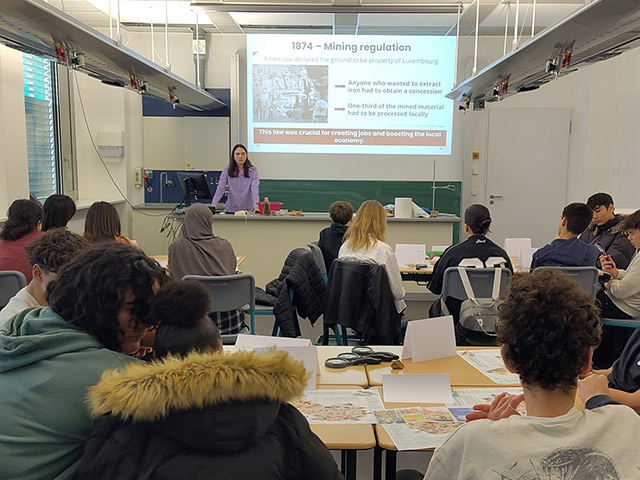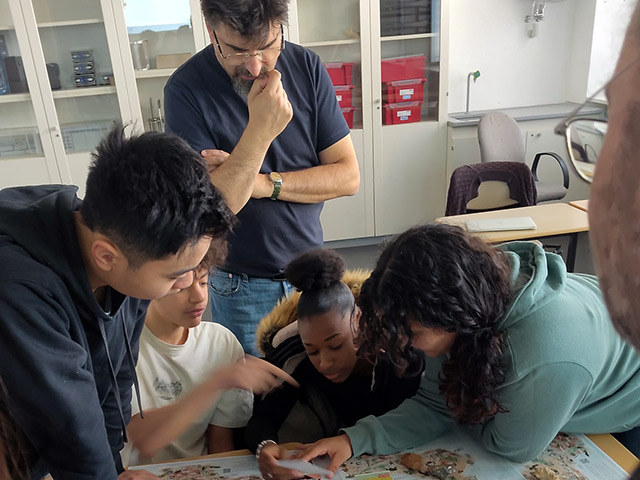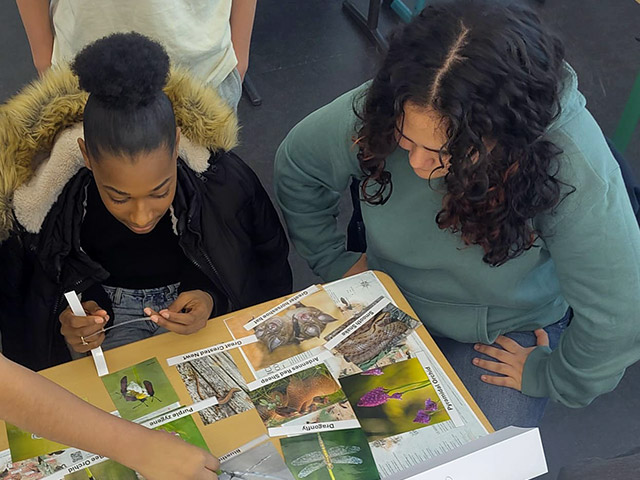The MiNELL project at the École Internationale Gaston Thorn began in March with an introductory session for pupils about the Minett UNESCO Biosphere and its importance.
This initial presentation, which took place at the school, aimed to provide a comprehensive overview of the concept of a biosphere, emphasising the delicate balance between human activity and the preservation of nature.
Global statistics were highlighted, including the fact that there are 759 biospheres in 136 countries, and the focus was on the unique commitment of the Minett region to protecting biodiversity and industrial heritage, while promoting sustainable development and citizen participation.
Facilitators retraced the creation of the Minett UNESCO Biosphere, starting with the region’s geological history and showcasing fossils such as seashells, belemnites and ammonites to illustrate its ancient marine past dating back 200–165 million years. The students were shown red rocks containing iron-ore ooliths and learnt about the formation of the Dogger Cuesta, a geological feature comprising hard rock, micaceous marls and limestone.
 |
 |
 |
© Minett UNESCO Biosphere
Interactive elements, such as distributing cards for a game on the history of industrialisation, encouraged active participation. Pupils also explored the impact of industrialisation on nature through before-and-after scenarios depicting nature’s recovery with pioneer trees such as the aspen poplar.
There was a significant focus on the biodiversity of the Giele Botter Nature Reserve, a core zone of the Minett Biosphere. They discovered fascinating details about the area’s flora and fauna, including 21 species of orchid, 171 species of butterfly (many of which are on the red list), 11 species of bat that use echolocation and rare birds such as the woodlark, which has a melodious song.
This session educated the pupils on ecological concepts and sparked their curiosity about their local environment, setting the stage for deeper exploration in subsequent activities.



